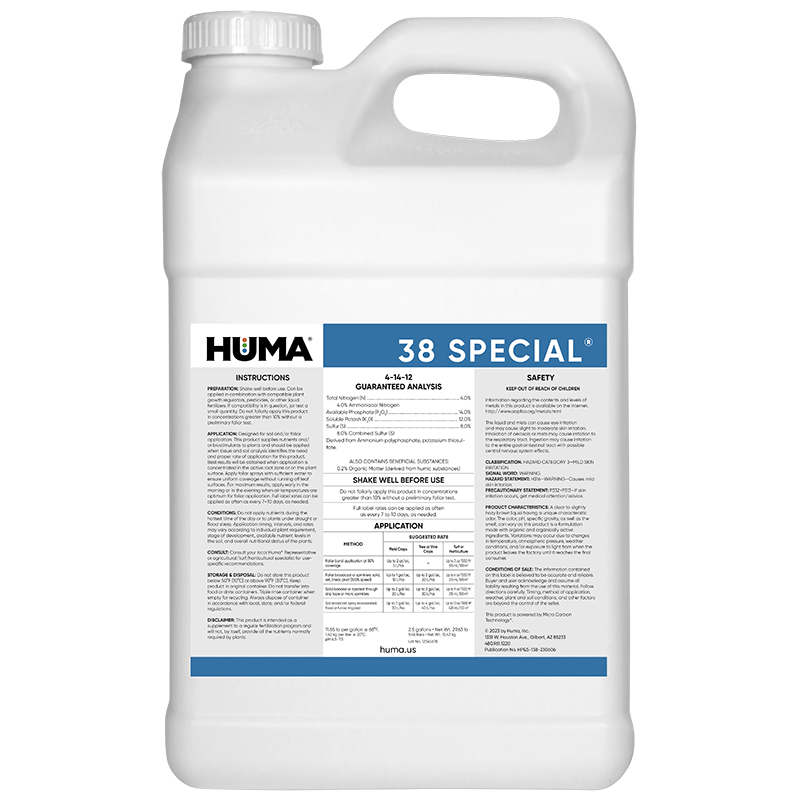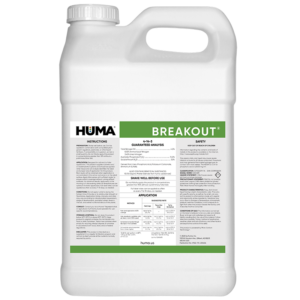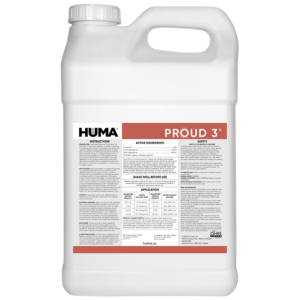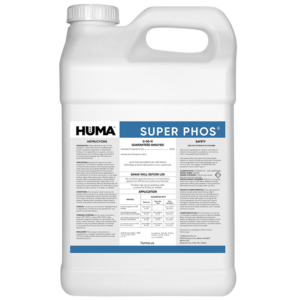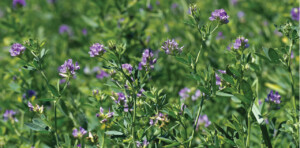38 SPECIAL
Benefits of Use:
- Stimulates root growth in seedlings and transplants
- Improves plant vigor
- Increases phosphorus levels that promote flowering and fruit set
- Organically complexed and salt-buffered to reduce leaf burn and phytotoxicity
- Foliar nutrients are “leaf friendly” to ensure maximum uptake and translocation
Deficiency Symptoms—When to Apply:
- Plant stress caused by nutrient deficiencies, insects, disease, weather, or chemical/mechanical damage
- Leaf burn or phytotoxicity from foliar applications
- Seedling diseases
FAQs
Related Products
Related Case Studies
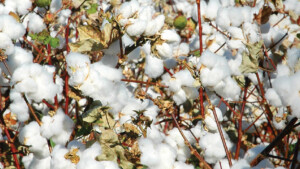
Huma® Zap® Increases Cotton Lint Yield by 125.8 lb/A, With 67% ROI
Background Application of Zap® to soils in combination with other Huma® fertilizers at various locations previously resulted in crops with improved plant growth and higher yields. Applying Zap® with grower standard products or as a single product application to soil and plants could also impact results. Objective The focus of this study was to observe

One-Hour Tissue Absorption Study
Background When applying foliar sprays, it’s highly beneficial for crop nutrients to quickly enter the plant tissue. Farmers often have a short application window and need to make sure the nutrients get into the plant prior to rain Objective Observe how fast a foliar application of Huma® Super Potassium® (0-0-40), powered by Micro Carbon Technology®,

Huma® Promax® and Zap® Decrease Charcoal Rot in Florida Strawberry, With Increased Yield and ROI of 10:1
Background Charcoal rot, caused by the soil-borne pathogen Macrophomina phaseolina, can be a significant threat to strawberry production. Two Huma® products, Promax® and Zap®, had previously been shown to be successful in managing soil-borne diseases in strawberries. Objectives The primary objectives of this study were to assess the efficacy of Promax® and Zap® in reducing
Related Blog Posts

This Week in Ag #26

This Week in Ag #28
The recent fertilizer market may be best described by two catch phrases: “wait-and-see” and “just in time.” In the fall of 2021, sky-rocketing energy prices pointed toward looming inflation and an inevitable rise in fertilizer prices. Many savvy growers, including those aligned with the regen ag movement, hedged their bets by purchasing crop nutrients that
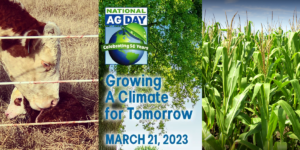
This Week in Ag #6
Tomorrow is National Ag Day! Just like Huma, Inc., National Ag Day is enjoying its golden anniversary. The day is dedicated to celebrating and raising awareness for how our food, fiber (and energy) is produced. This year’s theme is “Growing a Climate for Tomorrow.” Agriculture is the USA’s largest employer, responsible for 23 million jobs –

